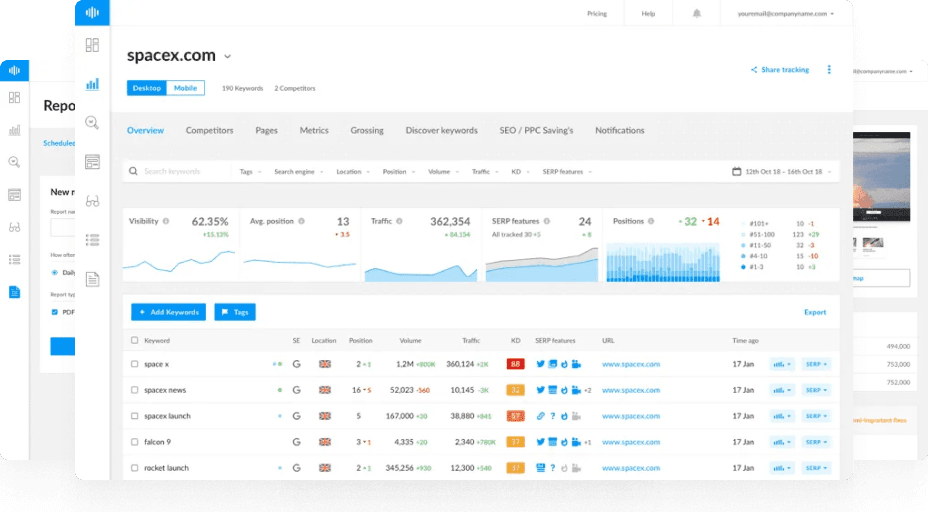What is Generative Engine Optimization (GEO)?
Generative Engine Optimization (GEO) is the emerging discipline focused on improving visibility and representation within generative AI systems — including ChatGPT, Google Gemini, Bing Copilot, Claude, and Perplexity AI.
Unlike traditional SEO, which aims to improve rankings in search engines, GEO optimizes content, entities, and datasets so they are understood, retrieved, and cited by LLMs (Large Language Models) during content generation and summarization.
In short, GEO helps ensure that AI systems reference your brand or content when producing answers, summaries, or creative outputs — effectively becoming the “SEO of AI.”
How Does GEO Work?
Generative models rely on retrieval-augmented generation (RAG) and vector-based search to locate relevant information. GEO ensures your data is well-positioned in those retrieval systems.
Here’s how the process works:
- Crawling and Indexing: AI models pull data from public web pages, APIs, knowledge graphs, and datasets.
- Vector Embedding: Your content is converted into numerical representations that capture meaning and context.
- Retrieval: When a user submits a prompt, the model searches its index or external retrieval layers for the most relevant vectors.
- Generation: The model synthesizes a response using both pre-trained knowledge and the retrieved data.
- Attribution: Some systems (like Perplexity and Bing Copilot) cite or link back to the original sources.
GEO makes your content machine-readable, semantically rich, and authoritative, so it’s selected during this process.
Why Is GEO Important?
As AI replaces traditional search functions, being “visible” now means being represented within generative summaries rather than just appearing in SERPs.
1. AI Becomes the Interface
Generative models are quickly becoming the primary way users discover information. If your content isn’t retrievable or cited, it effectively disappears from user view.
2. Brand Authority in AI Systems
When AI tools consistently reference your site or brand, it builds trust, recall, and authority — especially as users depend more on model-generated summaries.
3. Competitive Advantage
Early GEO adoption helps brands maintain visibility across new discovery channels before they become saturated.
4. Long-Term Search Integration
Google’s AI Overviews (SGE) and Microsoft’s Copilot integration show that GEO isn’t separate from SEO — it’s the next evolution of it.
How to Optimize for Generative Engines
1. Create Semantically Complete Content
LLMs reward content that fully explains a concept. Cover related subtopics, synonyms, and contextual entities rather than repeating keywords.
2. Strengthen Entity Signals
Link your organization, authors, and topics to verified entities (Google Knowledge Graph, Wikidata, Crunchbase, schema.org). AI models use these signals for trust and disambiguation.
3. Use Structured and Machine-Readable Formats
Provide data in formats easily parsed by AI systems — such as JSON-LD, schema markup, and clean HTML. Avoid hiding key text behind JavaScript or media.
4. Build Factual and Citable Content
Generative models prefer high-precision, factual statements they can quote or summarize safely. Include references, statistics, and clear attributions.
5. Monitor Mentions in AI Systems
Use tools like Ranktracker’s SERP Checker to track citations within AI-enhanced results and search visibility across different engines.
6. Focus on Knowledge Graph Alignment
Ensure your brand data, author profiles, and structured facts align with Knowledge Graph entities — improving recognition in generative contexts.
7. Maintain Ethical Transparency
Clearly label AI-assisted content and use verified bylines. Trust and authenticity influence both human perception and AI weighting.
GEO vs SEO vs AEO
| Feature | SEO | AEO | GEO |
|---|---|---|---|
| Goal | Rank on search engines | Be cited in AI-driven answers | Be referenced by generative AI systems |
| Focus | Keywords, backlinks | Entities, structured answers | Data structure, embeddings, factual precision |
| Output Type | Web pages in SERPs | AI answer citations | AI summaries, chat outputs |
| Optimization Layer | Web algorithms | Search AI overviews | LLMs and retrieval models |
| Key Metric | Rankings, CTR | Citations, impressions | Mentions, model references |
Practical GEO Techniques
- Embed entities contextually: Use consistent naming conventions and interlinking across pages.
- Publish data-rich formats: Use tables, lists, and structured datasets that LLMs can extract meaning from.
- Leverage RAG-ready datasets: Publish API-accessible or CSV-based datasets relevant to your niche.
- Provide machine context: Include definitions, relationships, and context cues within your content.
- Optimize for answer safety: Write factually correct, non-speculative information that models can confidently reuse.
The Future of GEO
Generative Engine Optimization is still in its early stages, but it will define how AI systems cite, summarize, and trust information in the next decade.
Expect:
- Integration with vector-based SEO strategies (embedding optimization).
- GEO analytics tools tracking AI citations and mentions.
- Structured brand entities becoming as vital as backlinks once were.
In time, GEO will be as essential as SEO — but focused on visibility inside the models that now power the world’s information flow.
Summary
Generative Engine Optimization ensures your content isn’t just found by humans — it’s understood, indexed, and referenced by AI systems.
As generative models reshape discovery, GEO becomes the foundation for visibility, credibility, and brand persistence in the age of artificial intelligence.
